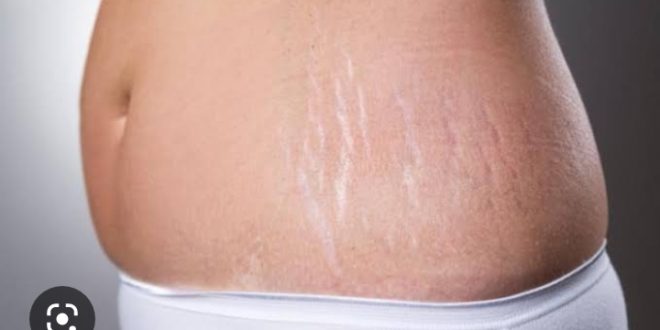Stretch marks are set-in streaks that show up on your stomach, breasts, hips, butt, and thighs. These long, thin, rippled marks are also called stria. If you have stretch marks, you probably wish they’d go away.
These grooves or lines in your skin aren’t harmful to your health, but they aren’t great to look at, either.
Stretch marks happen when your body grows quickly for any reason. Your skin can’t stretch enough to keep up.
Collagen is a protein that makes your skin more elastic. If your skin doesn’t have enough, the marks may show up as it stretches.
You may get stretch marks because of:
- Quick weight gain (this affects both men and women)
- Childhood growth spurts during puberty. Make sure kids know this is normal and that childhood marks may fade as they get older.
- Pregnancy as a result of stretched skin and a surge in hormones that weakens skin fibers. They might fade as you shed pounds after the baby is born.
- Breast implant surgery
- Bodybuilding, even those who have little fat can get them where their muscles bulge
- High amounts of steroids, either from steroid medications or illnesses like Cushing’s syndrome
- Marfan syndrome, a genetic disease that weakens your skin fibers and causes unusual growth
- Ehlers-Danlos Syndrome (EDS), a group of conditions that result from genetic changes to collagen, a protein in your body
They also run in families.
Stretch Mark Prevention
It’s possible to prevent stretch marks, but there’s no guarantee. The best way to lower your chances is to stay at a healthy weight, even during pregnancy. Talk to your doctor about an exercise plan and how to eat well.
Products with the ingredients centella and hyaluronic acid may work to prevent stretch marks.
 Home Of Ghana News Ghana News, Entertainment And More
Home Of Ghana News Ghana News, Entertainment And More





